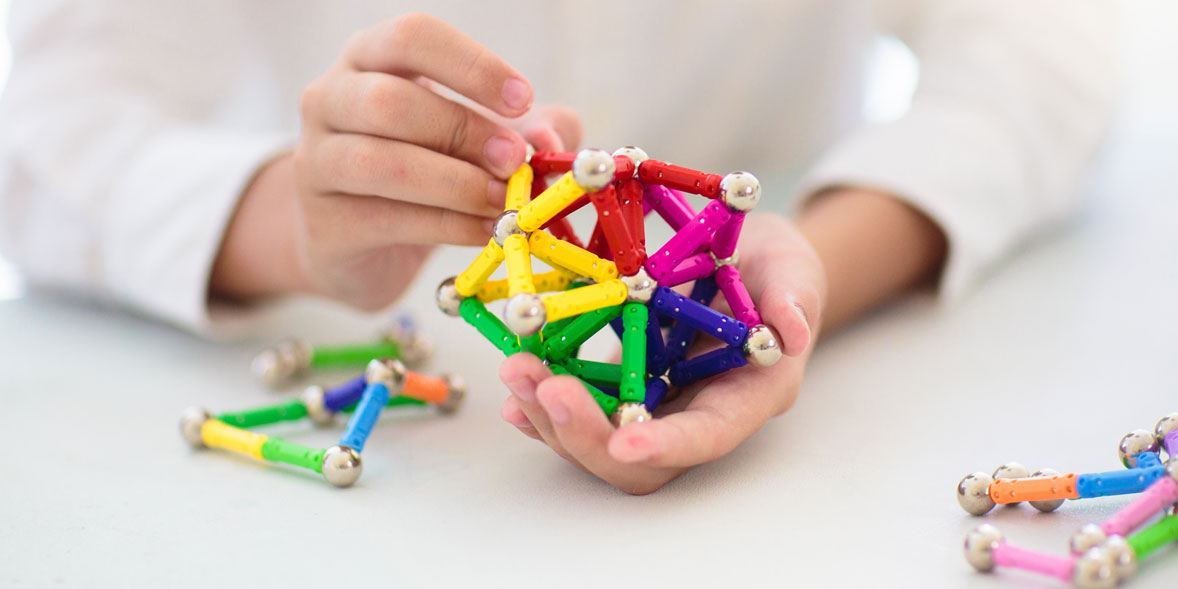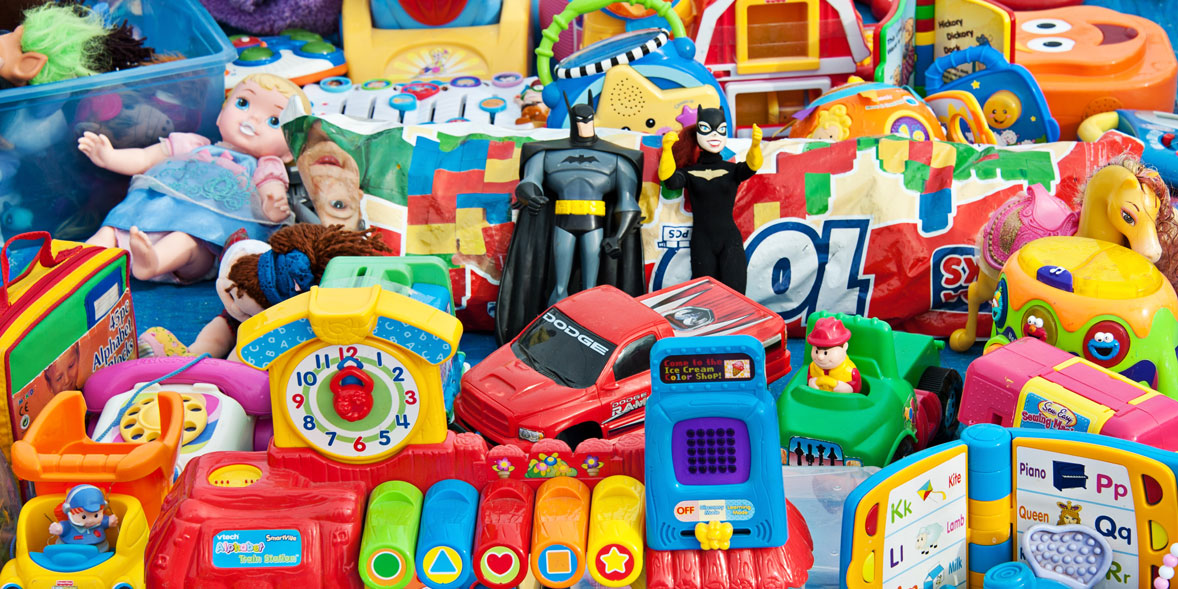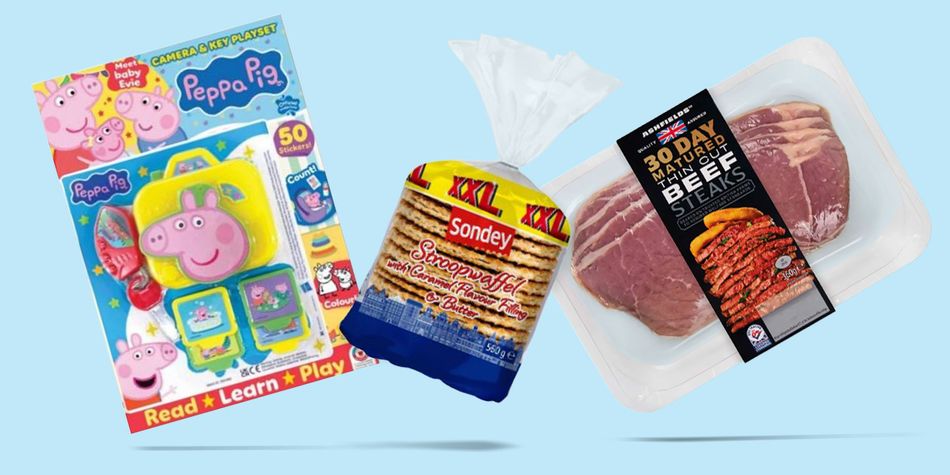By clicking a retailer link you consent to third-party cookies that track your onward journey. This enables W? to receive an affiliate commission if you make a purchase, which supports our mission to be the UK's consumer champion.
Revealed: 8 surprising things that could be a danger to your child

Keeping your child safe is a top priority as a parent, which is why it's important to educate yourself on unexpected dangers.
Just because a product designed for children is widely available, it doesn’t necessarily mean it's safe. For example, we've seen popular 'water bead' toys that are a choking hazard, plus plug protectors that can actually increase the risk of an electric shock.
Below, we take a closer look at household items that you'll want to keep far away from your little one. Plus, we share NHS advice on what to do if your child is choking – it's worth a read to ensure you're prepared.
Get our expert tips for making smarter consumer choices. Sign up for our free Weekly Scoop newsletter.
Children often put objects in their mouth and, if your child starts choking, it's crucial to act quickly and appropriately.
Advice shared on the NHS website says:
- If you can see the object – try to remove it, but don't poke repeatedly with your fingers as you could make things worse.
- If your child is coughing loudly – encourage the coughing to bring up what they're choking on.
- If your child's coughing isn't effective (it's silent or they can't breathe in properly) – shout for help immediately and identify whether they're still conscious.
- If your child's still conscious, but they're not coughing or their coughing isn't effective – use back blows (see the NHS website for instructions for babies under one year and children over one year).
1. Water beads
At a glance: They're small enough to swallow and expand when wet.

These squishy balls are popular with young children but can easily be swallowed, posing a choking risk. If water beads are ingested by your child, the product could expand in their digestive system and cause intestinal blockages.
A report by Consumer Reports published in 2023 details a 'water beads activity kit' that was recalled following the death of a 10-month-old infant. It also describes a case where a six-year-old was hospitalised after accidentally eating a cupcake topped with water beads instead of sprinkles.
Water beads are still readily available in the UK and they're sometimes sold online as 'crystal beads for vases'. Regardless of the name, these small balls will still expand when wet and parents should be aware of the potential dangers.
The GOV.UK website has previously shared a product safety alert stating that 'water beads should be kept away from children under 5 years of age.' Some listings on platforms including Amazon, eBay and OnBuy have been removed due to a 'serious' or 'high' risk of asphyxiation.
If your child is playing with water beads, always ensure they are supervised and store the beads out of reach when not in use. We suggest avoiding the risk entirely, however – there are plenty of fun toys available that are safer for your child.
Bookmark our guide to the latest product recalls from Which? and stay on top of dangerous products that have been withdrawn from sale.
2. Slush-ice drinks
At a glance: The Food Standards Agency (FSA) claims glycerol can harm young children.

Glycerol is often used as a sugar substitute in slush-ice drinks, and parents should be aware of the potential side effects. In 2024, the BBC reported on news that a two-year-old girl fell unconscious and had to be hospitalised after drinking a slush-ice drink.
A notice on the Food Standards Agency (FSA) website claims that glycerol can cause headaches and nausea in young children – and potentially shock or loss of consciousness at 'very high levels of exposure' (when several drinks are consumed in a short space of time).
The FSA report explains: 'While glycerol is found in some other foods, it is added at much lower quantities than in slush ice drinks.'
Following its risk assessment, the FSA issued voluntary guidelines advising that slush-ice drinks containing glycerol should not be sold to children under four. The government department also encouraged retailers to refrain from offering free refills to children under 10 to reduce excessive glycerol intake.
Prepare for a growing family: When family life gets hectic our expert advice can help you make the right choices, from improving your home to planning your finances.
3. Plug protectors
At a glance: British sockets have built-in safety barriers but plug protectors can disrupt them.

Parents across the UK rely on plug protectors to shield their children from electric shocks, but research has found that these attachments could do more harm than good. Various organisations including the Royal Society for the Prevention of Accidents (RoSPA) and NHS advise against them.
British 13-amp plug sockets are designed to be safe and feature plastic barriers that slide into place when the socket is empty. This creates a block between the electrical current and small fingers. When a plug is inserted, the earth pin moves the barrier and whatever device you're powering gets electricity.
When a plug protector is inserted into the socket, it leaves the circuit open and increases the risk of an electric shock.
To babyproof your electrical outlets, simply leave them alone. Teach your child the importance of keeping their fingers away from sockets and turn off unused plugs for extra peace of mind.
Learn how to identify common rashes in infants, including measles, chickenpox and scarlet fever, with our guide: What childhood rash is this?
4. Laundry tablets
At a glance: Brightly coloured capsules can attract children and cause poisoning.

The NHS warns that babies and toddlers will grab at brightly coloured objects. Laundry tablets and capsules are often packaged in attention-grabbing colours, so it's important that parents store them out of sight and out of reach.
Laundry capsules can cause poisoning if ingested, or chemical burns if the liquid gets into a child's eyes, nose or mouth.
Advice on the NHS website explains that symptoms of poisoning can vary depending on the substance and quantity ingested. Watch for signs including vomiting, stomach pain, confusion, drowsiness or fainting.
Babyproof your home: identify the areas in your house you must babyproof to let your child explore safely.
5. Button batteries
At a glance: When ingested, these can cause severe chemical burns to internal organs.

Button batteries are often small enough to be swallowed. In 2022, we heard of the tragic death of one-year-old Hughie McMahon from Motherwell, who passed away after swallowing a button battery from a toy teddy.
When a battery touches a wet surface it begins to discharge, which can create caustic soda. This chemical can cause severe chemical burns to internal organs.
If your child is playing with toys that are powered by button batteries, make sure the batteries are properly secured. Keep unused batteries out of reach of children.
In the event that your child swallows a button battery, take them to A&E immediately. Symptoms can include vomiting bright red blood, coughing, gagging, excessive drooling, stomach upset, chest or throat pain, tiredness, lethargy, reduced appetite or acting unusually quiet.
6. Mini eggs
At a glance: Their size and shape mean they can be swallowed whole.

The Child Accident Prevention Trust warns that mini eggs can be dangerous as they are slippery and easily swallowed whole, potentially blocking a child's airway.
When serving food to your little one, make sure you break it into smaller chunks if needed and supervise them while they eat.
For guidance on how to respond if your child is choking, scroll to the top of this page.
Our experts reveal the best stair gates to suit your baby and home, with advice on what to look for and the different types available.
7. Magnets
At a glance: Ingested magnets could snap together, potentially causing intestinal perforation.

If a child swallows two or more magnets, they can attract each other inside the digestive system, leading to blockages, twisting, compression or even perforation of the intestines.
We've previously spoken to Emma Hammett from First Aid for Life, who told us: 'If you think your child has swallowed a button battery, take them to A&E to have an X-ray before having the battery removed. If you suspect your child has swallowed magnets or a magnet and other metallic objects, go to A&E and have an X-ray.
'If magnets are found, then a referral will be made for emergency surgery. Make sure you explain that magnets could be involved – the hospital will need to know to ensure that an MRI scan is avoided, as this type of scan involves the use of strong magnetic fields.'
We've tested audio and video baby monitors – from LeapFrog, VTech, Hubble and more – to help you find a reliable model you can depend on. Discover the best baby monitors.
8. Second-hand toys
At a glance: Buying used can save money, but sharp edges and loose parts can be dangerous.

Buying used toys for your child can be a tempting money saver, but be cautious when picking out a bargain.
Most preloved toys are safe for your child, but it's important to inspect them thoroughly to make sure. Check for sharp edges or small parts that could break off easily and pose a choking hazard. See if you can spot a CE or UKCA mark on the item, as this is a claim by the manufacturer that the toy meets regulatory requirements.
A vintage toy could potentially be coated with lead paint or contain chemicals no longer deemed safe, so do your research before handing it to your child.
See also: Second-hand and preloved baby products: what's safe and what's not?
Our expert says:

'Parents need to be aware of common household items that can pose serious risks to young children. These products can cause choking, chemical burns or intestinal damage if swallowed.
'It’s important to take a moment to familiarise yourself with first aid techniques, too, as these skills could prove invaluable in an emergency.
'If you're looking to stay informed, I recommend bookmarking our story on the latest product recalls – it's updated regularly and flags dangerous products that aren't safe for young children.'
Jade Harding, Content Editor, Which?
Which? tests uncover the best products for parents
Our rigorous lab tests help us uncover the best products for your child, whatever your budget. We're 100% independent, which means we're not influenced by third parties and don't accept freebies from product manufacturers or retailers.
Which? members can explore our extensive library of product reviews, which includes:
- baby and child car seats – each child car seat we review is crash-tested, plus we check to see how easy it is to fit and how comfortable it will be for your child
- pushchairs – we've found fantastic pushchairs that are effortless to push, easy to fold, and convenient to carry
- high chairs – find a chair that's safe, easy to assemble and comfortable for your child
- cot mattresses – our top picks do well in our body support, durability and safety tests.
If you're not yet a Which? member, join Which? to get full access to our reviews.




